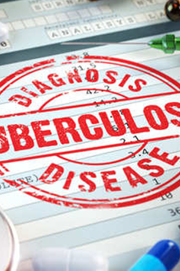
FM Nirmala Sitharaman wants to eradicate TB by 2025: Know causes, symptoms & treatment of the disease
Posted 03 Feb 2020 | Source: https://economictimes.indiatimes.com/
NEW DEHI: On Saturday, Finance Minister Nirmala Sitharaman presented a powerful Union Budget, that was woven around three primary themes - Aspirational India, Economic development for all and a caring society.
The 60-year-old FM, who presented her second Budget, launched a campaign to eradicate tuberculosis (TB) by 2025 - 'TB Harega, Desh Jeetega'.
TB is among one of the biggest risks to the country. As per World Health Organisation's global report in 2019, India is leading the globe in TB cases, and 27 per cent of world’s new infections are found in the country. The report 10 million people had TB in 2018, and it kills 1.5 million every year.
According to Press Information Bureau report in September 2019, a total of 21.5 lakh TB cases were reported to the government in 2018, compared to 18 lakhs in 2017, an increase of 17 per cent in one year.
While it is a major public health problem in India, education, awareness, diagnosis and treatment of the disease has become the most integral part of the healthcare ecosystem.
Here's a quick guide to know everything about the disease.
What is TB?
TB is an infectious disease caused by a bacterium - Mycobacterium tuberculosis.
How does one contract TB?
TB spreads through the air, by a person suffering from the disease. A single patient can infect 10 or more people in a year. It infect people when somebody with TB coughs, sneezes and/or spits. People can contract with TB mostly from people at home, workplace or other crowded places.
Symptoms of tuberculosis
The symptoms show only when it is in active phase. TB has basic symptoms like fever and cough for three weeks or more, sometimes with blood-streaked sputum. It affects the lungs and may affect other parts of the body. People get fever, especially at night, and experience weight loss and loss of appetite.
Some important symptoms include spinal and joint pain, meningitis, blood in the urine, and heart's poor capacity to pump blood.
Prevention
- Follow cough etiquette and hygiene
- Cover mouth and nose with a tissue when you cough or sneeze
- Avoid coughing or sneezing into your upper sleeve
- Put used issue in a waste basket
- Put on a surgical mask to protect others
- Wash your hands with soap and water, or clean them with alcohol-based hand cleaner
- Improve room air ventilation
- Ensure safe sputum collection
Treatment
TB can be cured when the right medication is administered correctly. Antibiotic treatment depends on the person's age, health, resistance to drugs, whether or not TB is active, and the location of the infection in lungs, brain or kidneys.
If you have latent TB, you will be administered with only one kind of TB antibiotic. However, if you have active TB (particularly MDR-TB), you may be administered with multiple drugs. There have been some interesting changes in the management of MDR-TB that is resistant to a very important treatment drug like Rifampicin. New drugs like Delamanid and Bedaquiline have improved the clinical outcome in patients with MDR-TB.
Injectable agents are no longer the pivot for treating patients with this disease.
TB treatment requires at least six months of treatment. Even if symptoms have disappeared, it is crucial to complete the whole duration of the antibiotic treatment to ensure that the disease is eliminated.
If you have received treatment for at least two weeks, you may not be classified as being in active TB phase.
(With inputs from Dr Swati Rajagopal, Consultant, Infectious Diseases, Aster CMI Hospital, Central TB Division of Ministry of Health & Family Welfare - https://tbcindia.gov.in, and World Health Organisation - www.who.int)
